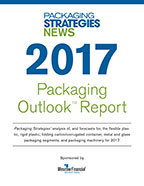Your brand on the tightrope

“Being on a tightrope is living, everything else is waiting.” - Karl Wallenda
Tightrope walking has been a tantalizing feat admired and feared by breathless onlookers since ancient Greece. It is a seemingly impossible, perilous sport (even outlawed in France in the 5th Century) requiring grit and focus. Walkers appear super-human, defying nature in their ability to do what they do in spite of the infinite number of difficulties threatening their success.
The high expectations of the spectating crowd, decades of family legacy, and flurries of media attention could easily cause self-consciousness that distracts the walker from the task of putting one foot in front of the other. The thinness and length of the wire, the wind, the sheer height of the journey and unpredictability of weather conditions all stack up to serious risks of failure.
Those trying to make goods and deliver them to customers also face unpredictable, changing circumstances and grave risks. Their brands walk a wire on the path to market every day.
Expectations increase from regulators, corporate leadership and consumers. Government regulations keep changing. Different countries require different information to be displayed on packages, and in specific ways, multiplying complexity.
Corporate leaders seek to get products to market faster at lower cost, which usually means with fewer resources or smaller staff dedicated to achieving the expedited timelines. And, missed shipment dates can cause products to be out of stock on store shelves, equaling lost revenue and incurring fines from retailers.
And then there is recall, where lost opportunity revenues combine with already-paid-for materials and labor required to bring products to shelf, plus possible regulatory fines or sanctions or even consumer lawsuits.
These are deep, serious financial falls to take. Looking ahead, the brand-damaging effects of recall can diminish future revenues in the form of lower sales. Companies that publicly recall products may experience decreased stock prices as consumers and the stock market show their reticence to trust the company again.
All of these external conditions, potentially devastating consequences, internal pressures and heightened expectations focuses our attention on one important task: get the package right.
With so much at stake, the package must be produced with 100% assurance of quality product information for consumers. Sometimes, consumer lives can depend on the information on a package, especially if allergen information is missing, or if dosage instructions are incorrect.
If your life depended on walking a tightrope, wouldn’t you demand the strongest cable, the best rigging, extra guide lines for stability?
Yet, processes for getting products to market may be currently upheld only by the heroic efforts of individual packaging and artwork managers. They keep processes as intact as possible in the face of company politics, personality conflicts, lack of documentation, and scheduling challenges.
This is like crossing a tightrope cable with a person holding each end instead of anchoring it with commercial-grade materials. I can’t imagine Nik Wallenda settling for anything less than a well-balanced, well-anchored wire underfoot.
Your path to market is the tightrope.
Maybe the weight of product recall has distressed your rope, making it slippery and slack and in need of replacement. Maybe you have lost resources, causing fraying and thinning of your rope. Perhaps the equipment you use to hold your rope in place needs to be upgraded to withstand the new heights to which you wish to venture with your brand.
What do you risk by walking on the ropes of the past instead of upgrading to a cable with superior strength?
Detailed, proprietary go-to-market processes can be steeled by software for every step of the journey, approval to approval, agency to marketing to regulatory to printer, ensuring best-quality, real-time information is included on packaging.
The outcomes of using technology to enable package development and approval processes can be so revolutionary that excellence in this area should be considered a growth strategy. If your company experiences significant project delays specifically because of artwork approval delays, the result can be millions of dollars in lost opportunity. Packaging could be killing your growth.
Besides managing risk, the capability of flawless packaging execution can be a competitive advantage in our highly regulated, global market. The agility to adapt to changing demands of regulators and consumers puts your company in a position to stay balanced, whatever the circumstances.
At our company, BLUE, we have helped some of the biggest brands in the world strengthen their processes, assign tasks and automate workflow so quality information is one less variable to worry about as your brand walks the tightrope every day. Because your brand is always on the move, never at rest.
“Life is always a tightrope or a featherbed. Give me the tightrope.” - Edith Wharton
Looking for a reprint of this article?
From high-res PDFs to custom plaques, order your copy today!






